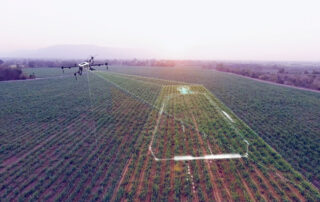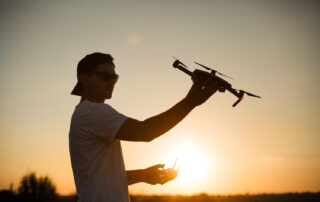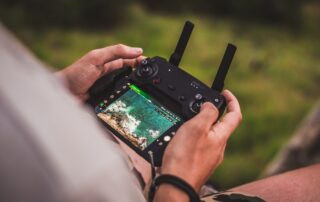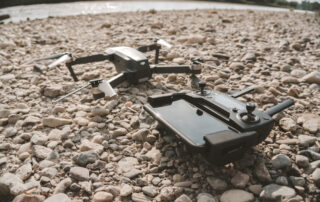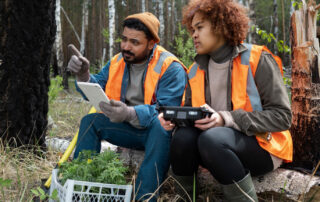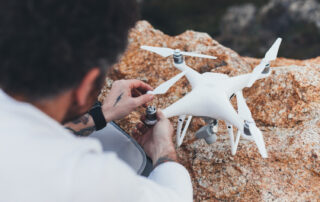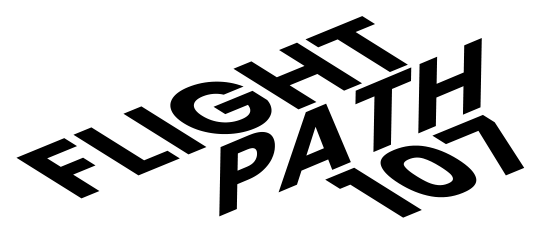Step 1: Get Your Foot in the Door
Start Small, Dream Big Many drone show pilots begin as crew members. You can start by contracting as a crew member, assisting with setup and teardown for a few months before transitioning to a full-time pilot role. This hands-on experience is invaluable for understanding the nitty-gritty of drone show operations.
Network Like a Pro Join local drone Facebook groups or online communities. Many job opportunities come from word of mouth or posts from company owners looking for help.
Step 2: Gain Experience and Build Your Skills
Certifications and Flight Hours If you don’t already have a drone pilot’s license, get one. Logging flight hours is crucial. Using platforms like Airdata to log your flight time can help you keep track of your experience and prove your skills to potential employers. Aim to log at least 100 flight hours to start.
Understand the Tech Drone shows may appear fully automated, but pilots have critical responsibilities. You’ll need to:
- Monitor Environmental Conditions: Fog, rain, and wind can affect show quality and safety. Note that light rain or snow are no-gos for drone shows due to the risk of damage and interference.
- Enforce Safety Zones: Ensuring the area is clear of people and obstructions. Drones are generally not certified to fly directly over people, and shows should be planned to avoid such scenarios.
- Manage Drone Statuses: Keep track of battery levels, GPS signals, and other vital stats.
- Interact with the Production Team: Coordinate with lighting, sound, and other show elements.
- Make Decisions During the Show: Be ready to abort missions if necessary for safety reasons.
Step 3: Learn the Tools of the Trade
Software Knowledge Drone shows require specialized software for planning and execution. Key programs include:
- Verge Aero: Used for programming and executing drone shows.
- Blender: Open-source 3D modeling and animation software.
- Cinema 4D: A professional 3D modeling, animation, and rendering application.
- UGCS (Universal Ground Control Software): A platform for controlling and managing multiple drones simultaneously.
Animation and Choreography While design teams typically handle animations, having an understanding of how to create 3D animations and import them into drone software is a huge plus. These animations often involve point clouds and keyframing movements.
Step 4: Get Practical Experience
Join a Team Drone show teams are usually small, consisting of a few pilots, designers, and salespeople. Hands-on experience is crucial, so start with smaller roles if needed and work your way up.
Show Prep and Execution Setting up a drone show involves several hours of prep work. You’ll need to conduct function tests, hover tests, and ensure all drones are visually inspected before the show. During the show, you’ll monitor everything to ensure it goes off without a hitch.
Step 5: Understand the Business Side
Earnings and Costs Full-time drone show pilots can make upwards of $80k annually, while contracted pilots can earn $500-$1500 per show. Here are more detailed financial figures:
- Drone Costs: Consumer drones like the DJI Phantom or Mavic series range from $1000 to $2000. Professional drones such as the Intel Shooting Star series or the EHang Egret series can cost $1500 to $3000 per unit.
- Show Costs: Clients typically pay around $100 per drone for a show. For example, a 500-drone show can cost approximately $50,000, plus animation and other expenses. This can go up to $100,000 or more for large-scale shows.
Client Costs Clients typically pay around $100 per drone for a show, with additional costs for animation time, travel, and equipment shipping. A 500-drone show can cost approximately $50k, plus animation and other expenses.
Step 6: Acquire Diverse Skills and Collaborate
Skills Needed Creating a drone show requires a blend of different skills:
- Piloting: Controlling and managing drones during shows.
- Design: Creating 3D animations and choreographing drone movements.
- Coding: Writing scripts and managing software for precise control and synchronization.
- Project Management: Overseeing the entire process, from planning to execution.
Roles Involved
- Drone Pilots: Handle the flying and operational aspects of the drones.
- Designers: Create the visual elements and animations for the show.
- Programmers: Develop and manage the software and algorithms used in the show.
- Project Managers: Coordinate between clients, pilots, and designers to ensure smooth execution.
Step 7: Stay Updated and Safe
Regulations and Waivers Before each show, you’ll need to handle regulatory requirements such as NOTAMs (Notice to Airmen), airspace authorizations, and compliance with local laws. Safety is paramount, so always adhere to the guidelines and ensure your equipment is in top shape.
Failsafe Measures Drones used in shows are equipped with several failsafe measures. For instance, in the event of a GPS or magnetic failure, they can initiate a controlled descent or auto-land to prevent crashes. While they don’t come with parachutes, these automated responses help mitigate risks.
Density and Collision Avoidance Drones can fly as close as 1 meter apart, maintaining their positions through RTK (Real-Time Kinematic) technology. RTK provides centimeter-level accuracy by using ground stations to correct GPS data in real-time, ensuring that drones can maintain precise positions relative to each other and avoid collisions. The central command unit oversees these operations, making real-time adjustments as needed.
Maximum Drones per Pilot There are regulatory limits on the number of drones one pilot can manage. Typically, waivers are required to exceed these limits. For instance, some companies have waivers allowing them to manage up to 1000 drones simultaneously.
Licensing and Certification Operating drone shows requires specific licenses. You need a Part 107 license, and depending on the nature of the show, you may also need waivers such as 107.29 for night operations and 107.35 for operating multiple drones simultaneously.
Safety and Accidents
While drone shows are generally safe, it’s crucial to maintain rigorous safety protocols. So far, there have been no major accidents reported in the industry, but continuous vigilance is essential to maintain this track record.
Step 8: Maintenance and Pre-Flight Checks
Fleet Maintenance Regular maintenance is crucial for a smooth show. This includes checking and replacing props and ensuring all systems are functional. Drones should be inspected and tested before each show.
Pre-Flight and Post-Flight Checks Conduct thorough pre-flight and post-flight checks to ensure everything is in order. This includes function tests, battery checks, and verifying that all drones are correctly calibrated and ready for flight.
Charging and Equipment Drones typically use off-the-shelf (OTS) chargers, and having a robust charging setup is essential to ensure all drones are ready for the show.

